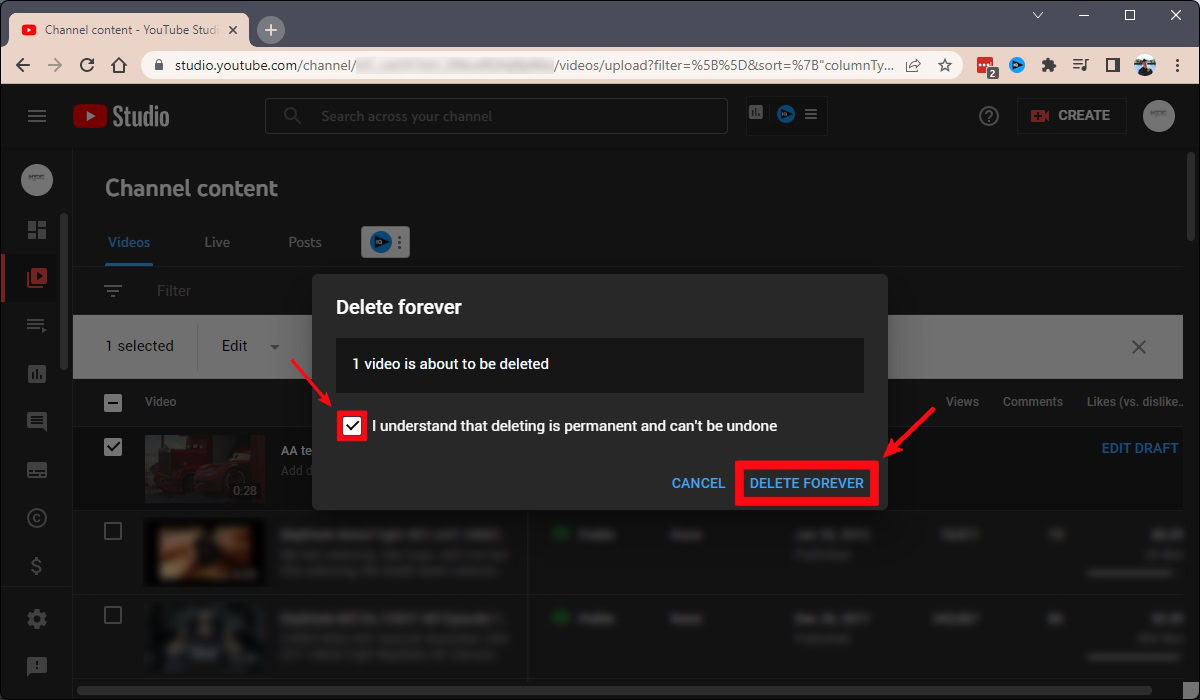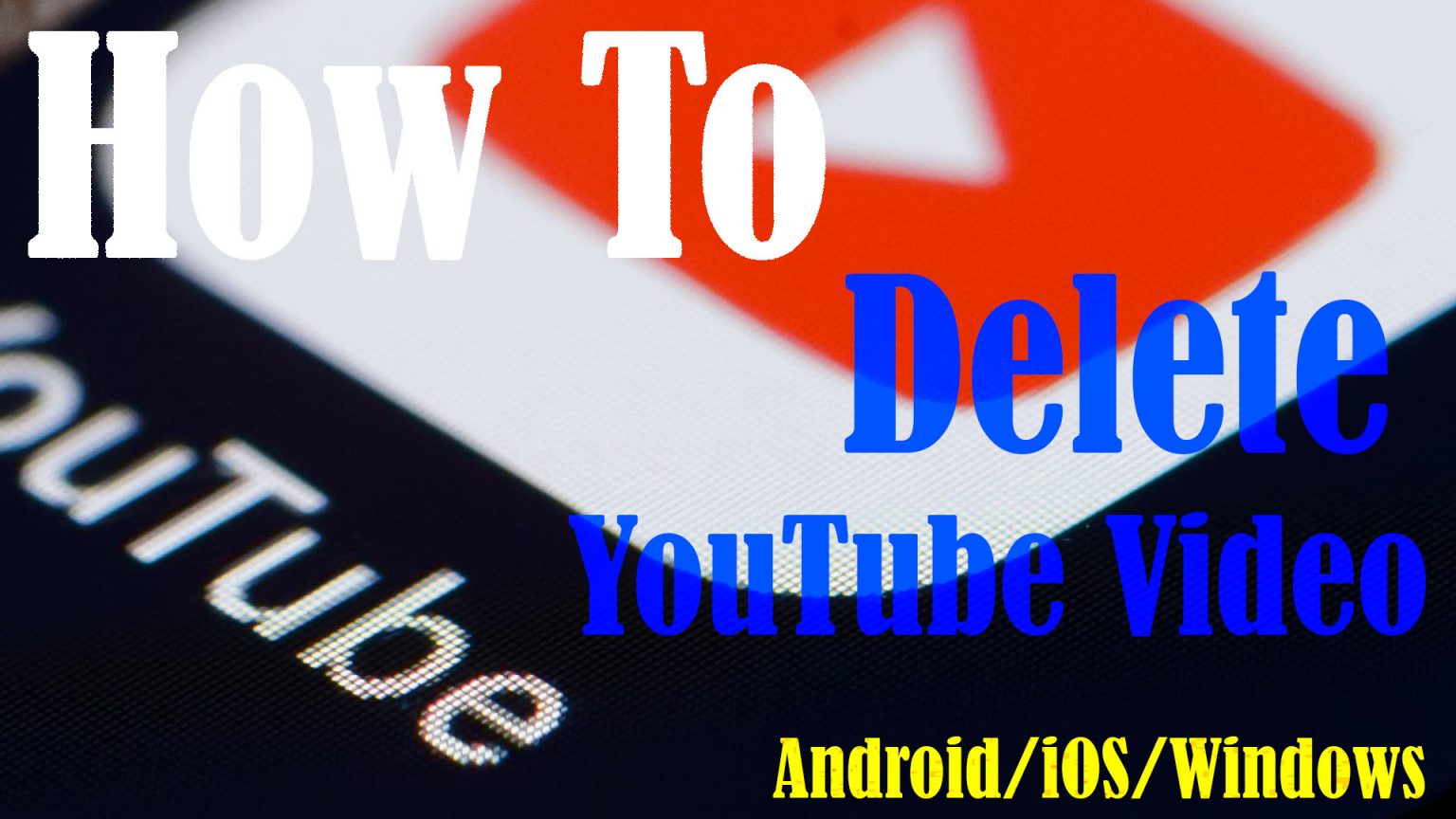Are you feeling overwhelmed by the endless stream of videos on YouTube? You're not alone! Many users find that the app can become a time sink, distracting them from more important tasks. In this guide, we'll explore how to completely remove YouTube from your Android device and discuss some compelling reasons you might want to consider this step. Let’s dive in!
Reasons to Remove YouTube from Android

Before diving into the steps for removal, it’s crucial to understand why you might want to bid farewell to YouTube.
- Time Management: It's easy to lose track of time while watching videos. Removing the app can help you regain control over your schedule and focus on more important tasks.
- Distraction Elimination: If you find yourself constantly distracted by notifications or autoplay, removing the app can create a more peaceful environment, allowing for better concentration.
- Data Usage: Streaming videos can chew through your mobile data quickly. By removing YouTube, you can save on data costs, especially if you have limited bandwidth.
- Quality of Content: YouTube is filled with an overwhelming amount of content, some of which may not be beneficial. Removing the app can help you avoid engaging with low-quality or misleading videos.
- Mental Well-being: For some, YouTube can lead to negative feelings—whether from comparison, frustration, or even addiction. Taking a break or removing the app can lead to improved mental health.
In addition to these reasons, consider how removing YouTube might impact your overall digital footprint. Reducing the number of apps on your device can lead to a cleaner, more organized home screen, making it easier to access the apps you truly value.
Ultimately, the decision to remove YouTube is personal, and understanding your motivations can lead to a more intentional relationship with technology. Whether you're looking for more time, less distraction, or simply a cleaner device, this guide will help you take that step!
Also Read This: How to Download Age-Restricted Videos from YouTube Without Hassle
3. Checking Your Android Version

Before diving into the process of removing YouTube from your Android device, it's essential to know what version of Android you're using. This information can help you navigate your settings more efficiently and ensure that the steps you follow are applicable to your device. Here’s how you can check your Android version:
- Open your Settings app. You can find it in your app drawer or by swiping down from the top of your screen and tapping the gear icon.
- Scroll down and look for About phone or About device. This option is usually located at the bottom of the settings menu.
- Tap on Software information or just Software. Here, you will see details about your Android version.
Once you find your Android version, it will be displayed in a format like "Android 10," "Android 11," or something similar. Knowing your version is crucial as it may affect how you uninstall apps or make changes to your device.
If you’re using an older version of Android, some options might look different, but the general steps should remain similar. Now that you know how to check your version, you’re one step closer to decluttering your device!
Also Read This: Uploading Longer Videos on YouTube: The Best Practices
4. Uninstalling YouTube from Your Device

Now that you’ve confirmed your Android version, you can proceed to uninstall YouTube from your device. Depending on your version of Android and whether YouTube came pre-installed, you might encounter different options. Here’s a step-by-step guide to help you with the process:
- Open the Settings app again.
- Go to Apps or Application Manager. The wording may differ based on your device.
- Scroll through the list and find YouTube. Tap on it.
- You’ll see options like Uninstall, Force Stop, and Storage. Tap on Uninstall.
If YouTube was pre-installed on your device, you might see only the option to Disable instead of Uninstall. Disabling it will remove it from your app drawer and prevent it from running in the background. Here's how:
- Follow the first three steps as mentioned above.
- Instead of Uninstall, tap on Disable.
- Confirm your choice when prompted, and YouTube will no longer be active on your device.
After uninstalling or disabling the app, you may want to clear the cache to free up some space. You can do this by going back into the YouTube app settings and selecting Storage, then choosing Clear Cache.
And there you have it! You’ve successfully removed YouTube from your Android device. If you ever decide to reinstall it, you can easily find it in the Google Play Store.
Also Read This: How to Remove Subscribers from Your YouTube Channel for Better Control
5. Disabling YouTube on Android

If you've decided that enough is enough and want to disable YouTube on your Android device, you're in the right place. Disabling the app can help reduce distractions or limit usage, especially if you're trying to focus on other tasks. Here’s how to do it:
First, navigate to your device's Settings:
- Open the Settings app from your app drawer.
- Scroll down and select Apps or Applications.
- Look for YouTube in the list of installed apps.
Once you find YouTube, tap on it, and you’ll see several options. Now, follow these steps to disable it:
- Tap on Disable. This will turn off the app and remove it from your app drawer.
- You might see a warning that disabling the app will affect other apps. If you're okay with this, confirm by tapping OK.
By doing this, YouTube won’t appear in your app list, and it won’t run in the background, saving you battery and reducing distractions. However, you can always enable it again if you change your mind by going back to the same settings and tapping Enable.
Keep in mind that disabling the app does not uninstall it. If you want to free up space, you might consider uninstalling it entirely. But if you're interested in keeping it without direct access, this method is perfect.
Also Read This: Complete Guide to Deleting Playlists from Your YouTube Account
6. Alternative Solutions to Access YouTube Settings
If you find that disabling the YouTube app isn't enough or you want to explore alternative solutions to manage your YouTube experience on Android, there are several options available. Here are some effective methods to consider:
- Use YouTube in a Browser: Instead of the app, you can use your favorite web browser to access YouTube. Just go to youtube.com. This way, you can control your access more easily without the distraction of the app.
- Modify Account Settings: If you're looking to limit your interaction, consider adjusting your account settings. You can control notifications, subscriptions, and even the content you see. Head over to YouTube Settings within the app or browser to fine-tune these preferences.
- Third-Party Apps: There are numerous third-party apps designed to help manage your YouTube experience. Apps like YouTube Vanced provide features like ad-blocking and background play, which might enhance your experience without the regular YouTube app.
- Screen Time Features: Many Android devices come with built-in screen time features that allow you to set limits on how long you can use specific apps. This can be a great way to keep YouTube in check without completely disabling it.
- Create Folders: If you still want to keep YouTube but limit its accessibility, consider creating a folder on your home screen and placing it in a less visible area. This small change can reduce temptation significantly!
By exploring these alternative solutions, you can find a balance that works for you. Whether you want to completely remove YouTube from your life or simply manage your usage better, there are plenty of strategies to choose from.
Also Read This: How to Tag Someone in YouTube Comments to Increase Engagement
7. Common Issues and Troubleshooting
Removing YouTube from your Android device might seem straightforward, but sometimes things don’t go as planned. Here are some common issues you might encounter along the way and how to troubleshoot them:
- YouTube Won't Uninstall: If you’re unable to uninstall YouTube, it could be because it’s a pre-installed app on your device. In this case, you can try disabling it instead. Go to Settings > Apps > YouTube and select Disable.
- App Still Shows Up After Uninstallation: Sometimes, even after uninstalling YouTube, you may still see remnants of the app. To fix this, make sure to clear the cache and data of the app. Navigate to Settings > Apps > YouTube > Storage and select Clear Cache and Clear Data.
- Problems with Other Apps: If you notice that other apps are behaving strangely after removing YouTube, it might be due to conflicting app data. Restart your device to refresh the system. If issues persist, consider checking for updates for your installed apps.
- Unable to Disable YouTube: If the option to disable is grayed out, it’s likely due to device restrictions. Ensure you’re logged in as an administrator or check if your device’s manufacturer has imposed certain limitations.
Remember, if you encounter a particularly tricky situation, a quick search online or visiting forums can provide solutions from others who faced similar issues. The Android community is vibrant and often shares helpful tips!
8. Conclusion
And there you have it! Removing YouTube from your Android device can be done in just a few steps, but it’s essential to approach the process thoughtfully. Whether you want to free up space, reduce distractions, or simply find an alternative, following this guide should empower you to take control of your device.
To recap:
- Decide whether to uninstall or disable YouTube.
- Follow the steps to remove the app from your device.
- Troubleshoot any issues that arise during the process.
By taking these actions, you can customize your Android experience to better suit your needs. If you ever decide to reinstall YouTube, it’s just as easy to get it back from the Google Play Store.
Ultimately, the goal is to create a device that works for you, not the other way around. So go ahead, take the plunge, and enjoy a more tailored Android experience!
 admin
admin








